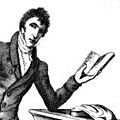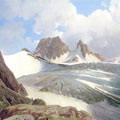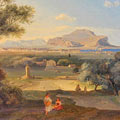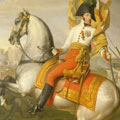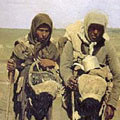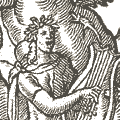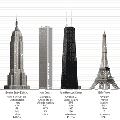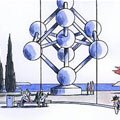Peter Hitchens traces his journey back to Christianity
“Kunst zet het rad van de tijd stil”, meende de Duitse filosoof Arthur Schopenhauer. Hij was niet de enige Duitse filosoof die in zijn kritiek op de Verlichting vond dat de mens door de kunst, en niet door de wetenschap, toegang vond tot de essentie van het bestaan. Zijn tijdgenoot Friedrich von Schelling schrijft “daß die Kunst das einzige wahre und ewige Organon zugleich und Dokument der Philosophie sei”. Kunst als “het enige ware en eeuwige organon van de filosofie” is een typisch romantische gedachte. Voor de meeste romantici vielen “de religie van de kunst” en “de kunst van de religie” samen.
Veel romantici, laat-romantici en post-romantici bekeerden zich op latere leeftijd tot het katholicisme. Een kracht van het katholicisme, maar ook van de Orthodoxe Kerk, is de rijke beeldende traditie. Anders dan in het protestantisme komt het geloof niet alleen door het Woord maar gaat het door alle zintuigen heen.
Zelfs godloochenaars kunnen zo door een kunstwerk getroffen worden, dat ze door die ervaring de weg naar God vinden. Het overkwam de broer van de bekende Engelse atheïst Christopher Hitchens (1949-2011) toen hij in Frankrijk voor het laatste oordeel van Rogier van der Weyden (1400-1466) stond. In een lang artikel in de Daily Mail schrijft Peter Hitchens hoe hij zich verzoende met zijn broer Christopher en vertelt hij ook iets over zijn confrontatie met het veelluik van Rogier van der Weyden.

het laatste oordeel (1443-1452)
detail van de opstanding der doden
I had scoffed at its mention in the guidebook, but now I gaped, my mouth actually hanging open, at the naked figures fleeing towards the pit of Hell.
These people did not appear remote or from the ancient past; they were my own generation. Because they were naked, they were not imprisoned in their own age by time-bound fashions.
On the contrary, their hair and the set of their faces were entirely in the style of my own time. They were me, and people I knew.
Bron: dailymail.co.uk

het laatste oordeel (1443-1452)
detail van de verdoemden
Peter Hitchens
Here, for the first time, in his new book The Rage Against God, Peter Hitchens, brother of prominent atheist Christopher Hitchens, chronicles his personal journey through disbelief into a committed Christian faith. With unflinching openness and intellectual honesty, Hitchens describes the personal loss and philosophical curiosity that led him to burn his Bible at prep school and embrace atheism in its place. From there, he traces his experience as a journalist in Soviet Moscow, and the critical observations that left him with more questions than answers, and more despair than hope for how to live a meaningful life. With first-hand insight into the blurring of the line between politics and the Church, Hitchens reveals the reasons why an honest assessment of Atheism cannot sustain disbelief in God. In the process, he provides hope for all believers who, in the words of T. S. Eliot, may discover the end of all our exploring will be to arrive where we started and know the place for the first time.
Bron: goodreads.com

